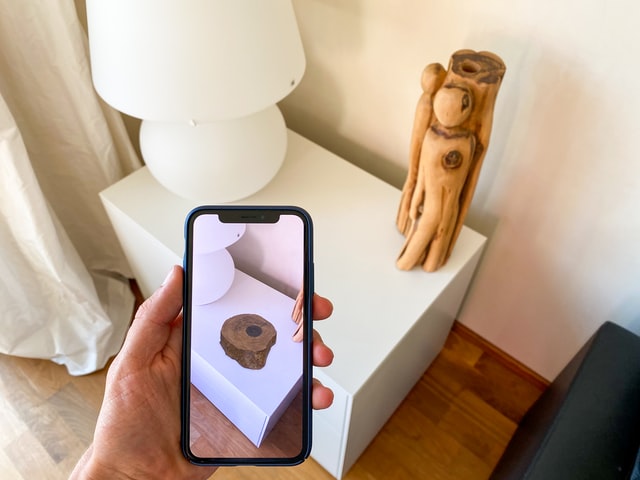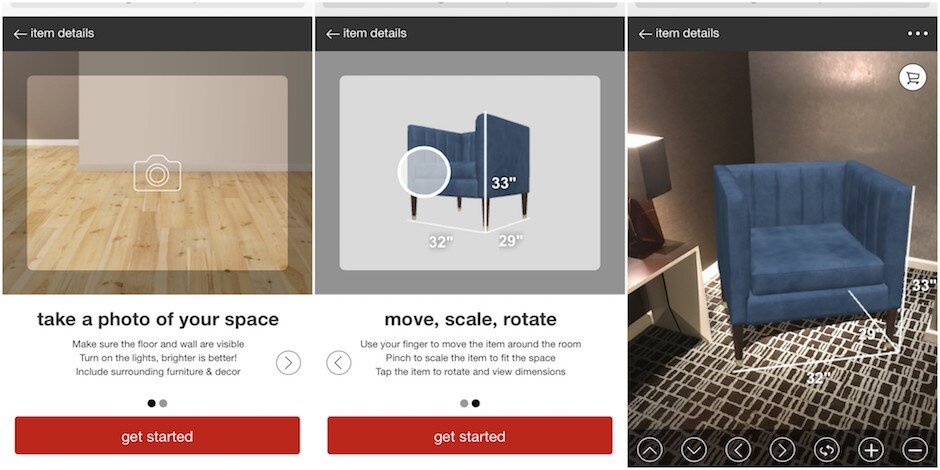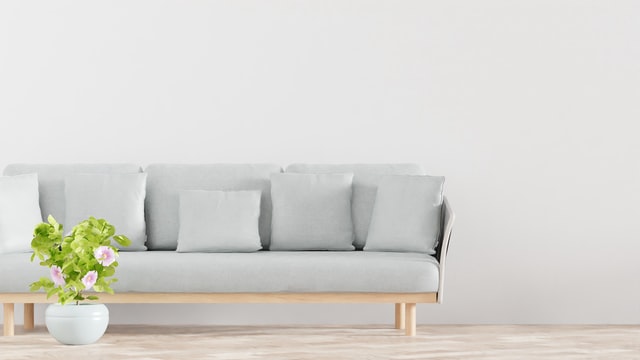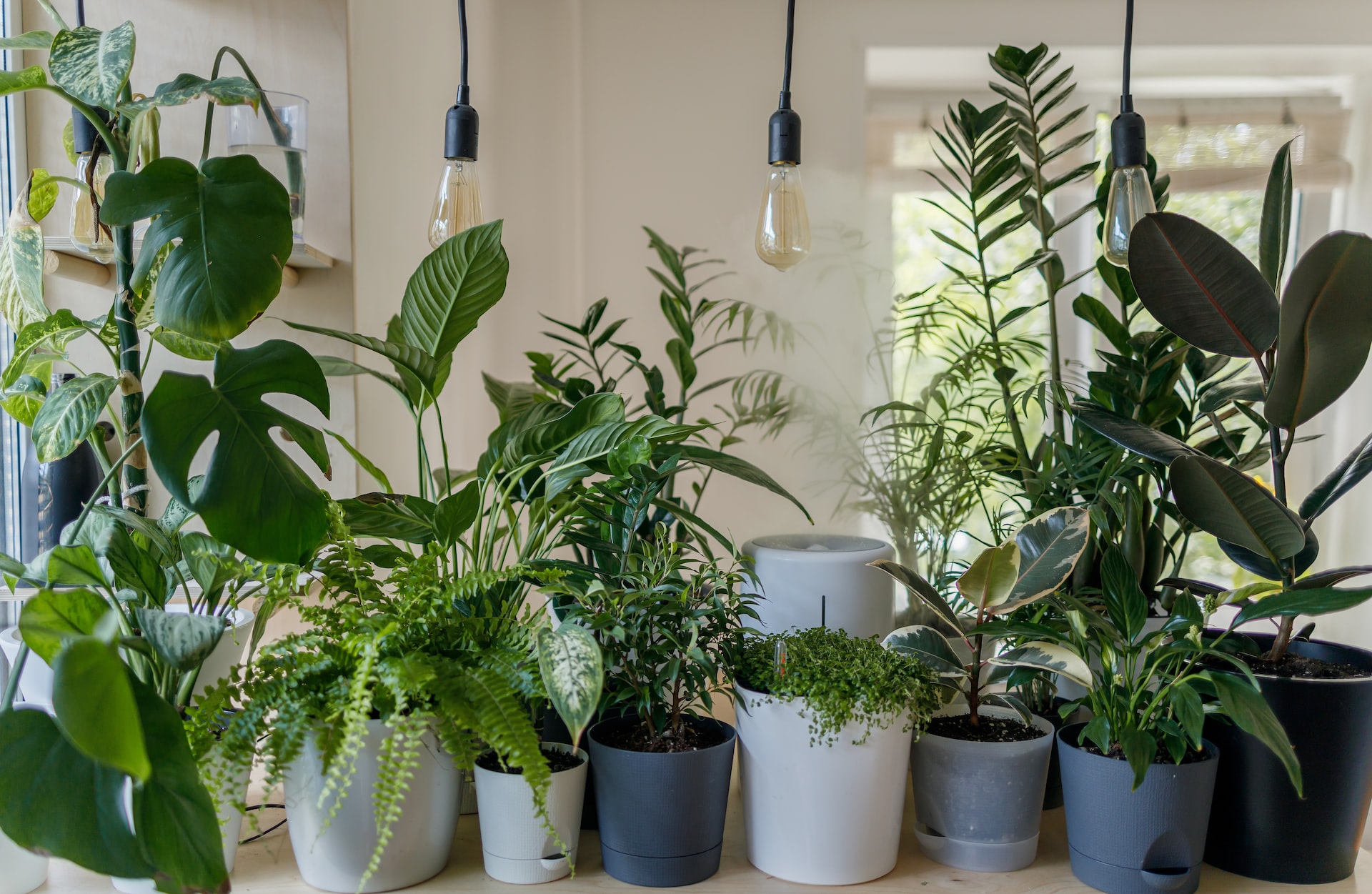Technology is constantly evolving, even in the realm of interior design. Augmented reality is sweeping the home design world by storm, making it easier for clients to interact with their contractors and designers. Augmented reality, or AR, is still relatively new, but it’s quickly becoming a popular way for customers to make decisions about their home’s design virtually.
Many contractors and home improvement companies are also hopping on the augmented reality bandwagon since it makes it faster and easier to get decisions from customers without having to travel to their homes until the job is ready for completion. This guide explains the role of interior design using AR implementation and how it’s changing the landscape.
What is augmented reality?
Augmented reality is a form of technology that allows you to use your smartphone or tablet to create a visual overlay of different products or design elements within or on top of the actual physical environment. You can snap a photo of your dining room, then use AR to incorporate different pieces of furniture to give you an idea of how it will look in real life. Many major retailers selling furniture and other home décor products use this new technology. You can use house augmented reality to scan the floor of your living room, then add couches and tables through the AR app or program to help you visualize how they will fit and look in your space.
How is augmented reality transforming interior design?
Interior design using AR implementation is transforming how professionals and their clients do business. This new tech allows customers to explore a variety of options, all without ever having to leave their homes. They can decide on things like artwork, wall colors, and furniture through the AR app. They can pass this information on to the interior designer, who can then place orders or make suggestions based on the client’s preferences. All of this can be done remotely, making it an efficient way for interior designers to communicate with their customers at any time and from any location.
Advantages of augmented reality in interior designing for clients

Traditionally, interior designers provide samples or use mood boards to inspire their clients and help them develop an interior design they’ll love. Augmented reality makes this process even easier for clients while providing a much more realistic view of their home’s appearance when the design process is complete. Here are some of the many advantages of using AR in interior design for clients.
Improved visualization
An augmented reality room makes it easier for clients to design their homes any way they want to. The visualizer helps clients mix and match pieces of furniture, sample different materials for finishes and flooring, and more so they can see what everything looks like ahead of time.
The ability to edit designs
Clients can make changes throughout the design process using AR software and apps, making it easier for customers to change their minds with just a click of a button. It also eliminates the daunting process designers usually go through when changing things last-minute.
Easier guidance for clients
A VR interior design company that uses AR can provide real-time guidance for customers. Designers can suggest everything from paint colors to furniture upholstery through augmented reality so clients can see these immediately and make decisions based on that guidance.
Try new products remotely.
An augmented reality interior design app allows clients to test different products through the software. It also provides inspiration and new ideas for products allowing clients to “test out” each product before making a final buying decision.
Advantages of AR for interior designers
Not only does augmented reality benefit clients, but it also has several advantages for interior designers. This new technology is saving interior designers a lot of valuable time. AR also saves money since designers no longer need to commute to and from the customer’s home or to and from retailers to purchase products or find samples. Overall, AR gives interior designers a new way to brainstorm ideas and communicate more efficiently with clients.
Provide interactive design presentations
Augmented reality allows designers to present their ideas to clients virtually. Instead of using a mood board or Pinterest, these interactive and effective sales presentations can give clients a clearer sense of what to expect, and they can also make suggestions for changes as they go.
Enhanced collaboration with clients
Interior designers will have a much better experience communicating and collaborating with AR. They can speak to architects, clients, and suppliers for easier and faster collaboration. It also makes getting clearer, more concise design ideas easier by getting a realistic view of the design throughout the process.
Higher profits
Designers can save valuable time and money through AR visualization, allowing designers to work remotely through the designing and purchasing process, increasing the bottom line for better profits. It also results in happier clients, increasing referrals for more business.
A better competitive edge
Offering clients augmented reality improves interior designers’ ability to rise above the competition. When clients get a complete view of their project in real-time, it inspires them to complete the project and hire the designer again for more projects in the future.
Higher customer retention
Using a VR interior design company that implements AR helps designers attract new clients and retain current ones. It also improves and increases profits and makes marketing a much easier process. Providing clients with AR will keep them coming back again and again.
The best apps for augmented reality

Here are some of the best-augmented reality apps for interior design:
- Google Lens: This app from Google lets you identify products in real-time and reality to help you get the information you need. It’s great for interior design since it allows clients to find home products in seconds and then pass the information on to their designer.
- Dulux Visualizer: Dulux is a leading paint brand, and the company’s Visualizer app lets designers and clients test and select various paint colors from home. You can choose from various hues and color schemes, then simply tap the screen to put the paint on the walls wherever you want it to go.
- AirMeasure: Size and scale are crucial for interior design, and the AirMeasure AR app helps you determine the size of almost any object. Use this augmented reality app to measure and place almost anything from sofas and coffee tables to flatscreen TVs in any room for a seamless fit.
- IKEA Place: This app from IKEA gives you a digital rendering of furniture and décor with a realistic view in any room. All objects are true to scale and feature authentic colors, so it’s easier to visualize what they’ll look like in reality. You can also walk around and view the furniture and other products from various angles to get a better view.
- AUGmentecture: This is an AR platform for interior design that helps designers and clients visualize 3D furniture models in a real-time environment. The platform offers a personalized and engaging shopping experience, improves customer satisfaction and retention, and streamlines collaboration efforts, ultimately making the design process more innovative and creative.
Augmented reality in interior design marketing and sales

Offering augmented reality to clients can help interior designers market their services more efficiently and effectively. This technology will improve home and interior design sales since it allows customers to see how things will actually look rather than how they might look. Giving people a realistic view helps to seal the deal and get customers to commit. If you offer augmented reality, ensure it’s included in your marketing plan to entice new customers and retain your current portfolio of clients. This tech takes the guesswork out of design, which helps clients feel confident about their decisions.
Virtual staging
Virtual staging is a revolutionary application of augmented reality (AR) in interior design. It lets clients visualize and interact with different design elements virtually, providing a realistic preview of their home’s appearance. Clients can overlay virtual furniture, decor, and finishes onto images of their physical space using smartphones or tablets. Virtual staging offers improved visualization and the ability to edit designs easily and guides clients through real-time suggestions. It also allows clients to test new products remotely, aiding in decision-making.
For interior designers, virtual staging saves time and money, enables interactive design presentations, enhances collaboration with clients, and ultimately leads to higher profits and customer retention. By leveraging AR technology, interior designers can gain a competitive edge and provide clients with an immersive and engaging design experience.
Current technology limitations
While AR offers a wide range of benefits; there are also a few limitations. Clients new to the concept of AR may have a learning curve or may find using the software and apps difficult, which may lead to frustration. Some AR apps also don’t provide accurate colors or scale, leading to later discrepancies. People with older smartphones may not have the right camera or other capabilities that allow this type of software to run smoothly. Interior designers may need to schedule a short training session to show clients how to use the AR software.
Augmented reality is an essential tool in your interior design kit to attract new clients and improve profitability. The ability to see color, scale, and other elements in real life will help customers make design decisions they’ll feel good about. Consider using AR to help you determine the absolute best choices for your home’s interior design. Consider offering this service to your customers if you’re an interior designer to provide clients with a new way to view their homes.




